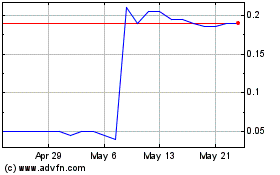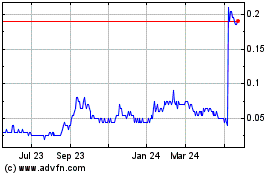Standard Uranium Ltd. (“Standard Uranium” or the “Company”) (TSX-V:
STND) (OTCQB: STTDF) (Frankfurt: FWB:9SU) is pleased to announce
the refinement of their existing exploration-only business model to
a more expansive project generator model. This transition will
allow the Company to be highly capital efficient through the
engagement of joint-venture partners for development of the
Company’s prospective land package and progress the Company’s
exploration projects more quickly while retaining upside exposure
to any discoveries.
With the addition of the Rocas Project (as
described below), the Company now has ownership interests in six
projects, totalling over 65,205 hectares across the uranium-rich
Athabasca Basin. The Company is now seeking strategic partners to
advance Rocas and other Standard Uranium owned assets.
“We have built an excellent uranium exploration
company in the best place on earth to find high grade uranium,”
said Jon Bey, CEO and Director for the Company. “Finding premier
uranium deposits is extremely difficult, it takes time and is
capital intensive. Working with joint venture partners will allow
our team of geologists to continue the exploration work without the
dilution to our valued shareholders on a continuous basis. We have
five projects that are drill ready, fully permitted and with First
Nations agreements in place.”
In connection with this transition, the Company
is pleased to announce the acquisition by staking of the Rocas
Project (the “Project”), totalling 3,152 hectares, in the
southeastern Athabasca Basin of northern Saskatchewan. The Rocas
Project is situated 75 kilometres southwest of the Key Lake Mine
and Mill facilities along Highway 914, and approximately 72
kilometres south of the present-day margin of the Athabasca
Basin.
The Project covers 5.5 kilometres of a northeast
trending magnetic low/electromagnetic (EM) conductor corridor which
hosts several uranium anomalies, including historical mineralized
outcrop grab samples along approximately 900 metres of strike
length, grading up to 0.50 wt. %
U3O8.
Notably, none of the historical uranium occurrences have been
drill-tested. Data compilation by the Company has identified
multiple target areas for high-grade1 uranium mineralization within
metasedimentary and orthogneissic basement rocks. The Project will
benefit from additional surface sampling and geophysical surveys to
aid in drill target vectoring.
Key Focus Points:
- Standard
Uranium shifting to broader scope exploration and project
generation business model.
- Newly
staked Rocas Project contains strong NE-SW magnetic low trend
coincident with historical anomalous uranium outcrop samples up to
0.50 wt. %
U3O8.
-
Anomalous lakebed geochemical anomalies that statistically
rank as greater than 95th
percentile U, Co, V, and Zn along the conductor corridor,
in addition to high U/Th ratios.
- Planning
for a prospecting, sampling, and mapping program in H2 2023
currently underway.
“The acquisition of the Rocas project provides
yet another opportunity for the Company to make a uranium discovery
in the eastern Athabasca region,” said Sean Hillacre, VP
Exploration for the Company. “Our technical team continues to
identify areas with shallow drill targets and favorable geology,
and we’re excited to continue investigating in this underexplored
area for high-grade uranium.”
1 The Company considers uranium mineralization
with concentrations greater than 1.0 wt% U3O8 to be
“high-grade”.
Figure 1. Overview map of Standard Uranium’s eastern Athabasca
projects. The newly staked Rocas Project is highlighted relative to
the Wollaston-Mudjatik transition zone and uranium mines, mills,
and occurrences. Rocas is located along the Wollaston-Mudjatik
transition zone, which is related to multiple high-grade uranium
deposits located to the north.
Figure 2. Plan map highlighting the magnetic
low/EM conductor trend on the Rocas project coinciding with
anomalous grab samples, with first vertical derivative magnetics in
the background.
Figure 3. Plan map showing regional bedrock
geology of the Rocas project area and EM conductors coincident with
anomalous lakebed geochemical samples.
Following the discovery of the Rabbit Lake
deposit, the area proximal to the Key Lake Road was explored
extensively in the 1970’s via prospecting, lakebed geochemical
sampling, and multiple magnetic, radiometric, and airborne EM
surveys. Several uranium-rich zones were identified, with most of
the showings situated along the Key Lake Road shear zone. In 2017,
airborne VTEM as part of Forum’s Hobo Lake Project defined
conductive trends on the Project west of and sub-parallel to the
Key Lake Road shear zone, with conductors generally being the
well-defined T-type. Multiple parallel conductors, offsets, and
termination points indicate the trend widening and cross-cutting
structures.
The Company believes the Rocas Project is
prospective for the discovery of high-grade basement-hosted uranium
mineralization. The staking of the Rocas Project is part of the
Company’s strategy to increase its landholdings in the
infrastructure-rich eastern Athabasca Basin of Saskatchewan,
Canada. The project is also well positioned logistically, being
only 2.5 km west of highway 914 and proximal to other key
infrastructure such as the currently active Key Lake Mill.
The scientific and technical information
contained in this news release, including the sampling, analytical
and test data underlying the technical information contained in
this news release, has been reviewed, verified, and approved by
Sean Hillacre, P.Geo., VP Exploration of the Company and a
“qualified person” as defined in NI 43-101.
About Standard Uranium (TSX-V:
STND)
We find the fuel to power a
clean energy future
Standard Uranium is a uranium exploration
company and emerging project generator poised for discovery in the
world’s richest uranium district. The Company holds interest in
over 161,265 acres (65,205 hectares) in the world-class Athabasca
Basin in Saskatchewan, Canada. Since its establishment, Standard
Uranium has focused on the identification, acquisition, and
exploration of Athabasca-style uranium targets with a view to
discovery and future development.
Standard Uranium’s Atlantic, Canary, Ascent, and
Rocas Projects, in the eastern Athabasca Basin, comprise twelve
mineral claims over 16,367 hectares. The eastern basin projects are
highly prospective for unconformity-related and basement hosted
uranium deposits based on historical uranium occurrences, recently
identified geophysical anomalies, and location along trend from
several high-grade uranium discoveries.
Standard Uranium's Sun Dog project, in the
northwest part of the Athabasca Basin, Saskatchewan,
is comprised of eight mineral claims over 18,101 hectares. The Sun
Dog project is highly prospective for basement and unconformity
hosted uranium deposits yet remains largely untested by sufficient
drilling despite its location proximal to uranium discoveries in
the area.
Standard Uranium’s Davidson River Project, in
the southwest part of the Athabasca Basin, Saskatchewan, comprises
ten mineral claims over 30,737 hectares. Davidson River is highly
prospective for basement-hosted uranium deposits due to its
location along trend from recent high-grade uranium discoveries.
However, owing to the large project size with multiple targets, it
remains broadly under-tested by drilling. Recent intersections of
wide, structurally deformed and strongly altered shear zones
provide significant confidence in the exploration model and future
success is expected.
For further information contact:
Jon Bey, Chief Executive Officer, and Chairman550 Denman Street,
Suite 200Vancouver, BC V6G 3H1Tel: 1 (306) 850-6699E-mail:
info@standarduranium.ca
Cautionary Statement Regarding Forward-Looking
Statements
This news release contains “forward-looking
statements” or “forward-looking information” (collectively,
“forward-looking statements”) within the meaning of applicable
securities legislation. All statements, other than statements of
historical fact, are forward-looking statements and are based on
expectations, estimates and projections as of the date of this news
release. Forward-looking statements include, but are not limited
to, statements regarding: the timing and content of upcoming work
programs; geological interpretations; timing of the Company’s
exploration programs; and estimates of market conditions.
Forward-looking statements are subject to a
variety of known and unknown risks, uncertainties and other factors
that could cause actual events or results to differ from those
expressed or implied by forward-looking statements contained
herein. There can be no assurance that such statements will prove
to be accurate, as actual results and future events could differ
materially from those anticipated in such statements. Certain
important factors that could cause actual results, performance or
achievements to differ materially from those in the forward-looking
statements are highlighted in the “Risks and Uncertainties” in the
Company’s management discussion and analysis for the fiscal year
ended April 30, 2022, dated August 26, 2022.
Forward-looking statements are based upon a
number of estimates and assumptions that, while considered
reasonable by the Company at this time, are inherently subject to
significant business, economic and competitive uncertainties and
contingencies that may cause the Company’s actual financial
results, performance, or achievements to be materially different
from those expressed or implied herein. Some of the material
factors or assumptions used to develop forward-looking statements
include, without limitation: the future price of uranium;
anticipated costs and the Company’s ability to raise additional
capital if and when necessary; volatility in the market price of
the Company’s securities; future sales of the Company’s securities;
the Company’s ability to carry on exploration and development
activities; the success of exploration, development and operations
activities; the timing and results of drilling programs; the
discovery of mineral resources on the Company’s mineral properties;
the costs of operating and exploration expenditures; the presence
of laws and regulations that may impose restrictions on mining;
employee relations; relationships with and claims by local
communities and indigenous populations; availability of increasing
costs associated with mining inputs and labour; the speculative
nature of mineral exploration and development (including the risks
of obtaining necessary licenses, permits and approvals from
government authorities); uncertainties related to title to mineral
properties; assessments by taxation authorities; fluctuations in
general macroeconomic conditions.
The forward-looking statements contained in this
news release are expressly qualified by this cautionary statement.
Any forward-looking statements and the assumptions made with
respect thereto are made as of the date of this news release and,
accordingly, are subject to change after such date. The Company
disclaims any obligation to update any forward-looking statements,
whether as a result of new information, future events or otherwise,
except as may be required by applicable securities laws. There can
be no assurance that forward-looking statements will prove to be
accurate, as actual results and future events could differ
materially from those anticipated in such statements. Accordingly,
readers should not place undue reliance on forward-looking
statements.
Neither the TSX-V nor its Regulation Services
Provider (as that term is defined in the policies of the TSX-V)
accepts responsibility for the adequacy or accuracy of this
release.
Photos accompanying this announcement are available
at:https://www.globenewswire.com/NewsRoom/AttachmentNg/15e72518-ffce-4ef4-8c52-2676176a6a23
https://www.globenewswire.com/NewsRoom/AttachmentNg/dee6c4a2-001c-4e4e-b4b7-ef766a625c0b
https://www.globenewswire.com/NewsRoom/AttachmentNg/20b39c71-415f-4a53-8660-6ae0b73a64c4
Standard Uranium (TSXV:STND)
Historical Stock Chart
From Jan 2025 to Feb 2025

Standard Uranium (TSXV:STND)
Historical Stock Chart
From Feb 2024 to Feb 2025
